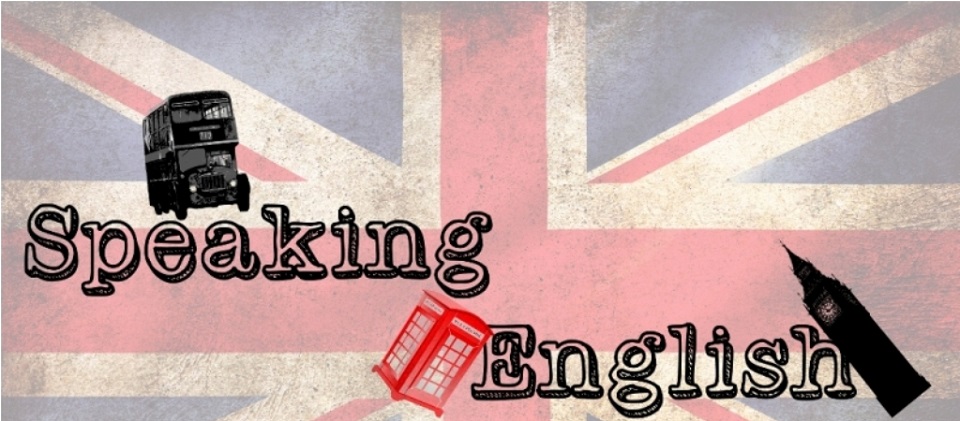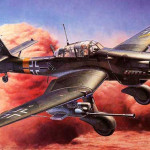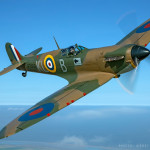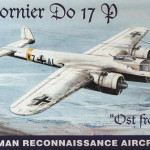By John-Angel Papadoulas and Lucas Papatheocharis
5March, 1933
On 5March 1933, national elections were held in the “Weimar Republic”, as Germany was called after World War I. The election is won by the far-right Nazi party, led by Adolf Hitler, an Austrian unsuccessful painter who dreams of giving Germany the greatness it deserves, in any way.
1 September 1939
On 1September 1939, Nazi Germany declares war on Poland and its troops pour into Polish territory, crushing all resistance. Within two weeks, the German army has advanced as far as Warsaw, the capital of the Warsaw state. Poland finally collapses on 6October 1939, 35 days after the German invasion.
9 October 1939
With Poland conquered and the Soviet Union pledging not to declare war on Nazi Germany (Molotov-Riberntrop Pact), Hitler delivers a plan he came up with to his generals that would destroy the British Empire. This operation will be called «Sea Lion».
Britain and France, allies since August 31, 1907, have jointly implemented a method of controlling military developments in Central Europe. In particular, France invests heavily in its arms industry i.e., upgrading the country’s defense facilities (e.g., fortresses) and maintaining battle-worthy infantry and air forces throughout its land. On the other hand, Britain maintains fewer and inferior forces than the French, mostly reserve, on French soil, while generally not focusing on the creation of large military infantry forces (this was undertaken by France). But the British Empire has one great advantage, its navy. Britain develops and maintains a large and highly equipped fleet, with which it controls the seas of the world. In this way, the two Allies are in complete control of events. Or aren’t the
10 May 1940
On 10 May 1940, German forces invade French territory through Belgium and Luxembourg. With lightning moves and masterful strategy, German forces paralyzed French defenses, and on June 16, 1940, the French government signs a humiliating peace-surrender treaty with the German government.
So, invincible France has been conquered, and the mighty French army has been disarmed, no longer able to defend both France and Britain.
Britain’s defence, as mentioned before, was 95% based on France’s integrity. While fear is slowly taking hold, perhaps for the first time, of British citizens, Hitler has, for months, devised the perfect plan to eliminate his country’s enemy.
October 9, 1939
Even before his forces invaded France, Hitler calculated that, after France, he would occupy Britain.
If France was subjugated to Germany, then the northern French coast opposite the British Isle would belong to the Nazi state. Given that the British infantry was outnumbered and inferior to the German infantry, Hitler believes that a landing would be a checkmate move and decisive for the success of Nazi Germany. German forces are to capture the main British coastal cities (London, Cardiff, Portsmouth, Southampton, Dover, Plymouth, Bristol), and then advance northward, conquering British cities one by one and securing German victory.
This plan is clever, but its implementation is hindered by two parameters. Initially, in order for German troops to reach England, it will be necessary for the German fleet to sail to the British Channel, which is protected by the powerful British royal fleet.
If, on the other hand, Germany embarks on an informal «siege of the English Channel», with constant naval battles with the British fleet, it will lose time and manpower, as the fleets of the two countries do not have large differences in capabilities. So, what could Germany do to confine British vessels?
The obvious solution would be the vertical bombing of British naval positions by the Luftwaffe, as the German Nazi air force was called. The ships could not, for the most part, compete with aircraft and the British Royal Fleet would be completely destroyed. So, nothing could have prevented the long-awaited German landing, couldn’t it?
Actually, there was one last hurdle, perhaps the British Empire’s «strong-last card,» the Royal Air Force (RAF). The powerful air force of the British would certainly prevent the constant bombing of their fleet. So, if Hitler wants a German landing on British Isle, he must destroy the RAF first.
The two air forces
In order for the magnitude of the conflict to be understood, it is first necessary to analyze the two opposing air forces and explain their capabilities.
Initially, the RAF was established during World War I, on 1 April 1918. During the interwar period (1919-1939) airports were created in the many British colonies in order to serve the aircrafts that traveled to them.
The British Air Force consists of various types of aircraft, each with different structure and properties.
Initially, Supermarine Spitfire fighters are single-seat (flown by a single pilot rather than two) and single-engine planes, with a metal construction and aluminum cover. Spitfires are excellent quality fighters, capable of developing high speeds and remarkable weight resistance. They also offer excellent maneuverability in aerial combat.
In addition, the «Hawker Hurricane», also a fighter plane, is like the Spitfire, a single-seater. They are made of steel and wood, while they also have a fabric cover. These warplanes are characterized by their strong durability and reliable performance, especially against bombing.
These two types of aircraft, the Supermarine Spitfire and the Hawker Hurricane, will be the main protagonists during the Battle of Britain. Often, a partnership exclusively between these aircrafts will be the country’s line of defense against the powerful German air force, the Luftwaffe.Start of form
Similarly, as in the case of the RAF, the Luftwaffe consists of many different types of aircraft.
Initially, the Messerschmitt Bf 109 fighter is a single-seat and single-engine landmark aircraft of the German Air Force. With a metal construction, it’s an excellent fighter (aircraft), well equipped, with incredible aerodynamic performance. It is superior to the British Hurricanes, but it has one major drawback, it can only stay airborne for 20 straight minutes, which made it difficult for German generals.
At the same time, decisive for the Nazi air force, the «Junkers Ju 87 Stuka» bomber is a two-seater (flown by two pilots) and made of metal and wood. It is a specialized bomber, used for specific bombing attacks (bombing at a specific point, e.g. central square of Birmingham, and not large-scale bombing, e.g. city of London in general).
The «Dornier Do 17″ is another battle-worthy aircraft. It is, like the Junkers, a two-seater with a metal construction. During raids, it is used as a reconnaissance (they precede the main attack to investigate the presence or non-presence of opposing forces) and as a bomber.
During World War II, the Luftwaffe had many more types of aircraft, different from each other. The aforementioned were the main ones.
The numbers
The Luftwaffe has a clear numerical superiority, with 1230 bombers, 933 fighters and 375 fighters perfectly equipped and fully prepared for the impending conflict.
On the other hand, the RAF has just 300 fighters to defend its country. However, in May 1940 these forces were reinforced with 325 new aircraft (instead of the 261 planned), and production would not be interrupted even during the months of regular German bombing.
The distribution of forces and the battlefronts
Before the battle, the generals of both sides organize and distribute the forces at various points that serve their strategy.
The RAF’s top officer, Hugh Dowding, divides the defence forces into four groups, which he calls «Sector Stations». According to his plan:
- Group 13, based in Newcastle, led by Richard Saul, protects the whole of central and northern Britain.
- Group 12, based (command centre) in the Church Fenton area of Nottingham is led by Sir Trafford Leigh-Mallory. It has the industrial centres of the Midlands and London under its protection.
- Group 10, based in Filton, Bath, under the leadership of Sir Quintin Brand, protects southwest England.
- Group 11, the most important of all, based at Bigging Hill in Uxbridge, under the leadership of Sir Keith Park, protects southwest England, the area where the British await the initial invasion of German forces.
Dowding himself is fully aware of developments from Bentley Priory.
One of the best-known German pilots of World War I, Hermann Göring, is appointed supreme general of German operations in Britain. Immediately, he begins to deploy Luftwaffe forces, dividing German forces into three groups, in the following way:
- Luftflotte 2, based in Brussels, in conquered Belgium, under the leadership of Marshal Albert Kesselring, aims to suppress defenses on the Portsmouth-Manchester line.
- Luftflotte 3, based in Paris, led by Marshal Hugo Sperrle, aims to capture the southern and southwestern counties of England.
- Luftflotte 5, based in conquered Norway, led by General Hans-Jürgen Stumpff, aims to paralyze defenses in northern England and Scotland.
It should be noted at this point that Göring, after the war, was convicted as a war criminal.
Phase 1 of the battle (10 July – 12 August 1940)
The Battle of England is the first official battle in history to take place exclusively in the air. Although 13 August is considered the official day of the start of the battle, since the previous month, the Luftwaffe has been bombing British radar stations and other targets near the English Channel. The damage they cause is very worrying for the British, as the British island’s top-class radar station, the Isle of Whyte, is completely destroyed, requiring at least 15 days to be repaired.
The German aircrafts also focused (throughout the Battle of England) on bombing and destroying Britain’s airfields in order to paralyze British aircraft on the ground. These operations, when successful, greatly troubled the British marshals.
Phase 2 of the battle (13 – 18 August)
On August 13, Luftwaffe aircrafts attacked with three formations of aircrafts, targeting the airfields of Kent, Hoking, Manston, as well as the Farnborough plant, which had important aeronautical facilities.
However, the RAF managed to worthily defend its airspace. In the battle, 45 German aircrafts were shot down, compared to 13 British. In fact, 6 British pilots were saved. At the same time, airport damage was almost non-existent, and they were repaired within 10 hours. In this conflict, moreover, it was found that the German «Stukas» were powerless against powerful fighter planes. The British air defence, throughout, remained calm, and the anti-aircraft fire was both dense and to the point.
The German military leadership believed that it would succeed in surprising the British, as well as the French and Poles. This, however, after the July bombing, was impossible. But the Germans were slow to realize this.
The next day, bad weather prevented the two air forces from taking off and battling again.
On 15 August, the Germans, hoping to surprise the air defences of northern England and Scotland, gave the order of attack to the Norwegian forces. The Messerschmitt Bf 109, of course, did not participate in the operation due to their limited operating time. They were replaced by the Messerschmitt Bf 110, but these were clearly slower than British fighters. Finally, the attack ended in complete failure. The German aircrafts did not even approach the British coast. After being detected by the island’s radars (these had not been hit by the German attacks of the first phase), a large group of the British Air Force rushed to shoot them down. The fighters, faced with certain defeat, abandoned their bombs, throwing them into the sea and disappeared into the clouds. The rapid gathering and coordination of the British air force that day surprised and puzzled the German leaders.
On 16 August, the Luftwaffe attacked again, with less momentum, on the British coast. However, two days later, a major attack took place and the destruction of the airfields of Kenley (which was almost completely destroyed), Croydon, West Malling and Biggin Hill. However, German losses in Stukas were so great that the German leadership withdrew them completely from the following raids.
Over the next two days, 17 and 18 August, no progress was made on either side.
Phase 3 of the battle (24 August – 6 September)
The bad weather that took place between 19 and 23 August once again hampered the planned air operations. Thus, the British had time to repair some damaged facilities, and the German generals to devise a new tactic.
On August 24, Luftwaffe aircrafts returned to British airspace. The Germans concentrated their efforts on specific targets, e.g., the Sector Station, a war equipment factory. For this purpose, they used a greater number of fighters.
The German victories were numerous and British losses were almost irreplaceable. At the same time, many British administrative centres were destroyed. After the heavy losses in planes, Dowding was worried that the Luftwaffe might gain a large numerical superiority, like it did at the beginning of the battle. According to his calculations, if the Germans continued the attacks with the same pace, Group 11 would have to be moved further north to reinforce the defenses of northern England and Scotland. But then the possibility of a rapid and successful intervention by British aircraft squadrons of German invasions would be severely limited. At that point, Dowding began to believe that the enemy had discovered the weak point of the British defence.
On 30 August, Biggin Hill was completely destroyed, after two consecutive attacks, the second of which was incredibly apt. The relentless attacks on airports continued the next day, and many of them were temporarily rendered useless. Biggin Hill was struck again on 5 September, while British losses in aircraft and manpower were beginning to rise to alarming levels.
Phase 4 of the battle (7 – 16 September)
The Germans, from the beginning of the «Battle of Britain», aim for a quick victory, with the least possible loss of time and forces. Thus, from August 7, 1940, they follow a different strategy, committing a fatal error. From now on, German attacks are aimed exclusively at the capital of the British Empire, London. Attacks at a single point and away from Luftwaffe bases allow British forces to be informed of German attacks in good time and give fighters time to organize to counter them.
Dowding almost immediately notices his opponents” change of strategy and is relieved. Although German generals have reacted to Göring’s strategy, he does not pay attention to them.
Initially, German bombers, surprising Britain’s 11 Air Defense Group in London, managed to cause multiple damage to the city on September 7, igniting large-scale fires in London Harbor and the East End.
Göring then explains to his colleagues that the terrorist bombings (Terrorangriff) are Hitler’s own inspiration. The German commander-in-chief meets the crews of the aircraft returning from operations and composes a speech, which he delivers on the radio. However, in his speech, Göring is very reminiscent of the Roman Emperor Nero, which causes particular annoyance even to the German generals.
15 September 1940 was decisive for the outcome of the «Battle of Britain». On this particular day, the British manage to shoot down more than 60 Luftwaffe aircraft, while their own losses amount to only 26 aircraft. From that point it becomes clear to everyone (British and German) that, despite the difficulties brought about by the German bombing, the RAF still retains its enormous strength and that the German landing no longer has any real chance of materialization.
At this point, on September 16, 1940, Hitler indefinitely postponed Operation «Sea Lion» and the German landing on the British Isles. Now, the German leader and his staff are working all day on planning and implementing «Operation Barbarossa», aimed at occupying the Soviet Union. Although the regular night bombardments in London continue for a few more weeks, they slowly decline and eventually cease. The Luftwaffe is now busy bombing Soviet cities such as Leningrad and not British cities anymore.
Consequently, the «Battle of England» ends with a victory for the defending British Empire.
Causes of German failure
The German failure concealed some causes. Initially, the German commander-in-chief, Hermann Göring, did not fully understand the limitations of the Luftwaffe’s aircraft capabilities. Despite his ignorance, however, he acted on his own accord, without consulting the other generals.
Also, German air strikes had no clear target. They were only aimed at terrorizing and intimidating the British government into surrendering unconditionally, something which did not happen.
Moreover, the Germans, from the beginning of the battle, rushed to complete the operation, as a result of which they succumbed to constant strategic errors. Even when Dowding was terrified of the German strategy at one point in the battle, and the Germans were assured of success, they changed their strategy in order to save time. This resulted in the salvation of the British Empire and the «Allies» in general.
Finally, the leader of Nazi Germany, Adolf Hitler, towards the end of the conflict, neglected the campaign in England as he hurried to invade the Soviet Union. In other words, he made a decisive mistake in the course of the war. He was required to enslave Britain first, using a sound strategy, no matter how long it took, and then, having secured victory on the western front, to concentrate his forces in the east and invade the Soviet Union undisturbed.
The consequences
The «Battle of Britain» brought many consequences and changed the course of World War II.
Initially, the Luftwaffe failed to beat the RAF, so Operation “Sea Lion” was called off. If it had taken place, it would probably have been crowned with success. Consequently, the whole of western Europe, and the vast British Empire would collapse under Nazi Germany. Also, if England were occupied, Hitler could devote himself fully to Operation Barbarossa and the war against the Soviet Union. Under these circumstances, he would have had a good chance of achieving his goal of conquering the Soviet Union (since in fact he came very close to victory), winning the war and imposing Nazism on the whole world. This victory, moreover, boosted the morale, not only of the British, who defended their country against the national enemy, but also of all the opponents of the Germans, as this battle showed that the Axis is not invincible.
Surely, after a battle there are also negative consequences. With the German attacks, almost all of England and much of Britain was razed to the ground (e.g., the bombing of Coventry), while many British airfields were rendered useless. Equally, perhaps even more, important were the human lives taken. In aerial combat, the British lost 1542 pilots and soldiers, while 422 were wounded. Their losses in aircraft were 1744, of which 1220 were fighters, 376 bombers and 148 of various types. The British civilian population also suffered enormous losses. 23,002 British civilians were killed, while the wounded amounted to 32,138. Most were victims of the “Blitz” German bombing. However, hundreds also died when planes (British or German) were shot down and crashed into residential areas and onto houses. German losses in aircraft and soldiers have not been ascertained.
Bibliography:
- https://el.wikipedia.org/wiki/%CE%9C%CE%AC%CF%87%CE%B7_%CF%84%CE%B7%CF%82_%CE%91%CE%B3%CE%B3%CE%BB%CE%AF%CE%B1%CF%82 (to express the overall picture of the battle)
- https://chat.openai.com/ (on the structure and capabilities of the two opposing air forces)
- https://www.onalert.gr/uncategorized/h-maxh-ths-agglias-to-ksekinhma-kai-to-telos-ths-maxhs-pou-arxisan-oi-nazi/129668/ (to express the phases of battle)
-
- https://en.wikipedia.org/wiki/Hugh_Dowding (on the expression of the original name of the British Commander-in-Chief)
- https://en.wikipedia.org/wiki/Hermann_G%C3%B6ring (on the expression of the original name of the German commander-in-chief)
- https://en.wikipedia.org/wiki/Hans-J%C3%BCrgen_Stumpff (on the expression of the original name of the German wing commander)
- https://www.mixanitouxronou.gr/chiliades-amachoi-echasan-ti-zoi-toys-sti-quot-machi-tis-agglias-quot-apo-aeroplana-poy-epeftan-sta-spitia-toys/ (to record British losses)









